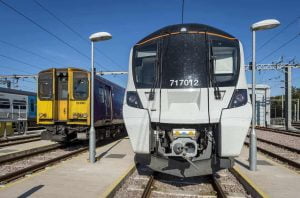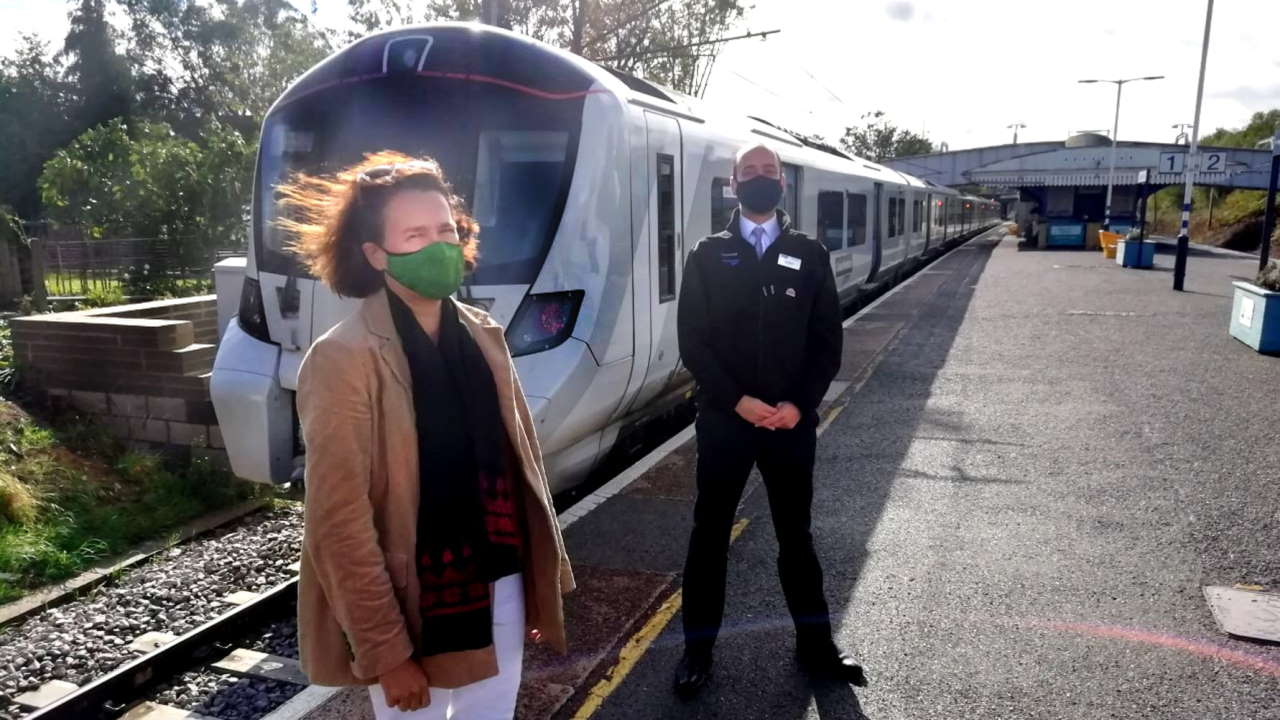New trains in Hertfordshire have saved more than 4,000 tonnes of carbon dioxide emissions through their braking system.
In their first year of services, the 25 new Class 717 trains have generated enough electricity through their brakes to power the households of Welwyn and Hatfield Borough for a month.
The trains are used on the route between London Moorgate and Stevenage, Hertford North and Welwyn Garden City.
The Class 717 trains have new features such as power sockets, Wi-Fi, real-time information and Air conditioning. They replaced the Class 313 trains which were come of the oldest electric train fleets.

The new trains are 20 per cent lighter which makes them more energy efficient. The new Class 717 Moorgate trains were part of a £2bn modernisation programme by Govia Thameslink Railway which also saw 115 new Thameslink trains and new Class 387 carriages for Gatwick Express and Great Northern, all of which have regenerative braking.
Great Northern MD Tom Moran said: “Our new trains have transformed our passengers’ journeys by replacing their cramped, outdated 42-year-old trains, with fully-accessible, spacious, modern air-conditioned units with the latest in passenger information, onboard Wi-Fi and power points at every pair of seats.
“Hidden away, underneath the carriages, electric motors help the trains brake, feeding the energy back into the network for use by other trains. That technology has already generated 17 million kWh – enough to power the homes of Welwyn and Hatfield Borough for more than a month, potentially saving more than 4,000 tonnes of carbon dioxide emissions.
“With all our managed stations now using energy generated from a clean, renewable source, passengers can travel safe in the knowledge they are doing their bit for the planet.”
Catherine West MP said: “These new trains Great Northern has brought in have made a huge difference for commuters. They are modern, spacious and air-conditioned but best of all they are much better for the environment. I am very pleased to learn how much energy they generate and how many tonnes of carbon dioxide that could be saving.”
Where Next?
RailAdvent Plus
Get image downloads, Prints and Streaming Video
RailAdvent News
The latest railway news
RailAdvent Shop
Railway Prints, DVD’s / Blu-Ray’s and more
LocoStop Community
Come and share your railway pictures
Mainline UK Steam Info
Upcoming mainline steam tours/loco movements
GREAT NORTHERN
Visit their website





Responses
Just think how much would have been saved if the Woodhead route between Manchester and Sheffield was still open, using the famous Class 76 locos designed in the 1940’s with the very same regenerative breaking. I can not avoid thinking we have been conned and will be lead up the garden path forever, like dumb fools by political liars that rule the country and ruin our railways…
Remember when BR got rid of diesel hydraulics, today they are mainstream.
Progress, not.
I do like what Siemens have built the Class 717 for Great Northern and yes regenerative braking is what most newer electric trains should have that puts power back to the National Grid. Rather than wasting electricity completely.
Siemens could of continued on manufacturing more new electric trains such new trains to replace the Class 313 and Class 455 that Southern should consider replacing their older electric stocks with new electric air-conditioning trains to be used on the suburban services and on the Coastway services in Southern England.
All thanks to Siemens. I think they should continue with manufacturing new trains with regenerative braking such as new trains to replace the Class 313 and Class 455 units used on Southern’s suburban routes and the East & West Coastway services. Plus does Thameslink Class 700 and South Western Railway Class 707 Desiro City units also have regenerative braking.